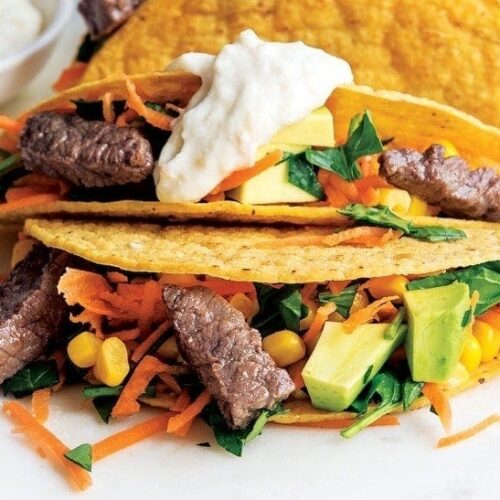
Nutritionist Claire Turnbull answers the questions people newly-diagnosed with diabetes most often ask.
I have been diagnosed with type 2 diabetes. Am I right to think this is the ‘mild’ or less serious type?
The two main types of diabetes are type 1 and type 2. Neither should be considered ‘mild’ or less serious than the other. They are different.
In type 1 diabetes, the immune system destroys the insulin-producing cells of the pancreas. This is known as an autoimmune condition. Insulin is the hormone which helps lower blood glucose levels after eating. If you aren’t able to produce insulin, it means your blood glucose levels can get dangerously high. People with type 1 diabetes, therefore, have to inject insulin to survive. With support and guidance, people with type 1 diabetes can live very normal lives.
In the case of type 2 diabetes, the pancreas is either unable to produce enough insulin to manage blood glucose levels, or the pancreas is actually pumping out more insulin than it needs but the body is unable to respond as well to the insulin produced. This is known as insulin resistance. Insulin resistance is often associated with carrying extra weight. Type 2 diabetes might be considered mild because often in the initial stages it can be managed with diet and exercise. However, type 2 diabetes is progressive, and often people will require medication and eventually possibly insulin to help manage their blood glucose levels. It is important for people with type 2 diabetes to get regular checkups and look after their eyes and feet as these parts of the body can be affected.
I have never had a sweet tooth, I don’t add sugar to my food or drinks, yet I’ve got type 2 diabetes. How come?
The amount of sugar in someone’s diet doesn’t directly affect whether they will develop diabetes or not. Among the risk factors for diabetes are:
- ethnic background (Maori, Polynesians and Asians are more at risk)
- being overweight
- having a blood relative with type 2 diabetes
- women who have had a baby weighing more than 4kg (9lbs)
- an inactive lifestyle.
A high-sugar diet is certainly not healthy and may result in someone carrying more weight than is healthy, but it is likely that you are affected by other risk factors from this list which has resulted in your development of diabetes.
What types of meals can I eat now that I have type 2 diabetes?
When you have diabetes, you are simply looking for healthy, balanced meals with plenty of vegetables and a moderate amount of carbohydrate (about the size of your fist) which are low in fat, especially saturated fat. This type of meal is what anyone who wants a healthy lifestyle aims for. You don’t need special meals or try to eat separately from the family provided they are eating healthy meals. A good guide is the ‘ideal plate’:
- half plate of low-starch vegetables, eg. broccoli, carrots, capsicum, onions, mushrooms
- quarter plate of carbohydrate (palm size), eg. pasta, rice, potatoes, kumara, green banana, yams
- quarter plate of protein, eg. meat, chicken, fish, eggs.
If you are eating a ‘mixed’ meal and it is difficult to work out if it fits into the half, quarter, quarter model above, look at the ingredients in what you are eating and add extra vegetables/salad or a small potato or grainy bread if required. See a dietitian for an individualised eating plan.
Do I need special foods now that I have diabetes?
Part of managing diabetes is aiming for a healthy, balanced diet. This doesn’t mean you need to rush out and buy special ‘diabetic foods’. It is more important to focus on balancing your overall diet and including plenty of vegetables, around two to three pieces of fruit each day (spread throughout the day), whole grains, legumes (such as chickpeas and lentils), low-fat dairy products, lean meat and fish.
Rather than looking for special items, here are a few tips on normal everyday foods:
- Bread: the grainier the better.
- Jam: just use a scrape. A reduced-sugar jam may be helpful, but is not essential.
- Canned fruit: go for fruit in natural juice or ‘lite’ versions.
- Biscuits: if they are ‘sugar-free’ they are likely to be high in fat. Go for a healthier snack or have one plain biscuit and call it a day.
- Sauces and dressings: go for low-fat versions and use in limited amounts.
- Dairy products: go for low-fat options (cottage cheese is great), and use hard cheese (such as edam) sparingly.
Learning how to read food labels is an important step to making everyday healthy food choices.
Watch for the new diabetes-friendly badge on our recipes.
www.healthyfood.com










